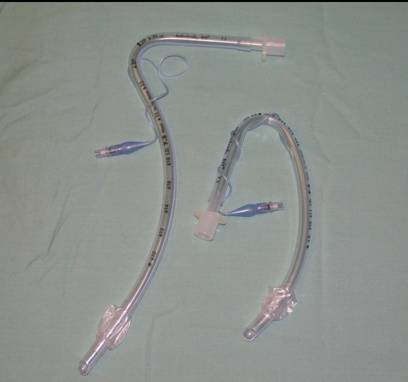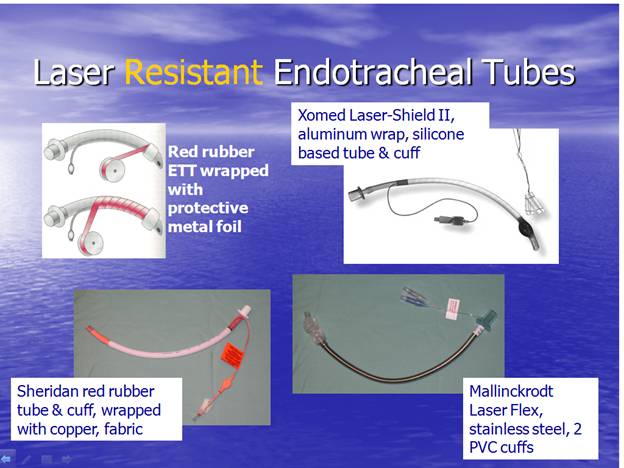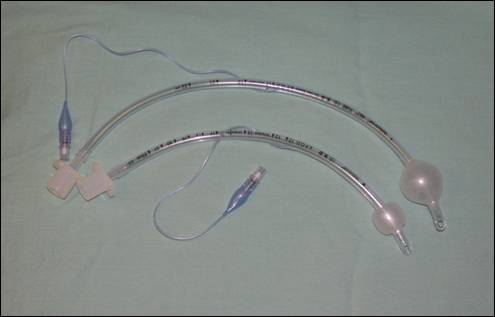SPECIALIZED ENDOTRACHEAL TUBES
Microlaryngoscopy Tube
Identical size 5.0 MLT shown above standard pediatric 5.0 ETT.
Microlaryngoscopy tube (MLT) vs. standard ETT
The MLT is often used in place of a standard small diameter ETT to facilitate Direct Laryngoscopic procedures utilizing Microlaryngoscopy techniques. The surgeon prefers a small diameter ETT to facilitate the view of the airway. The nickname for MLT is "mighty long tube"! Can you think of two advantages the MLT has over a standard pediatric ETT in an adult patient?
1 |
Right Angle Endotracheal Tubes (RAE)

Right Angle Endotracheal (RAE) Tubes (Nasal on left; oral on right)
RAE- Right Angle ETT
- Shaped for nasal and oral intubations
- Useful for directing ETT & circuit away from surgical field
- May make suctioning difficult
- The nasal RAE is often used for oral surgery or mandibular Fx for ORIF.
- The oral RAE is used in any surgery to facilitate directing the tubes away from the surgical field above the neck (ophthalmology, ENT or facial surgery) or for T&A with the mouth gag.
Laser Resistant Endotracheal Tubes
The most frequent laser related complication is airway fire. Laser Resistant ETTs are used to prevent airway fires during laser surgery of the airway. Initially, fires are located on surface of ETT and cause thermal injury to tissues. If the fire burns through to interior of ETT, O2 and positive pressure ventilation create a blow torch effect, blowing heat and toxic products down into lung. Cuff puncture allowing O2 enriched atmosphere can also increase chance of fire after laser burst.

Examples of laser resistant ETTs.
Insert possible link to powerpoint lecture with airway fire protocol.
